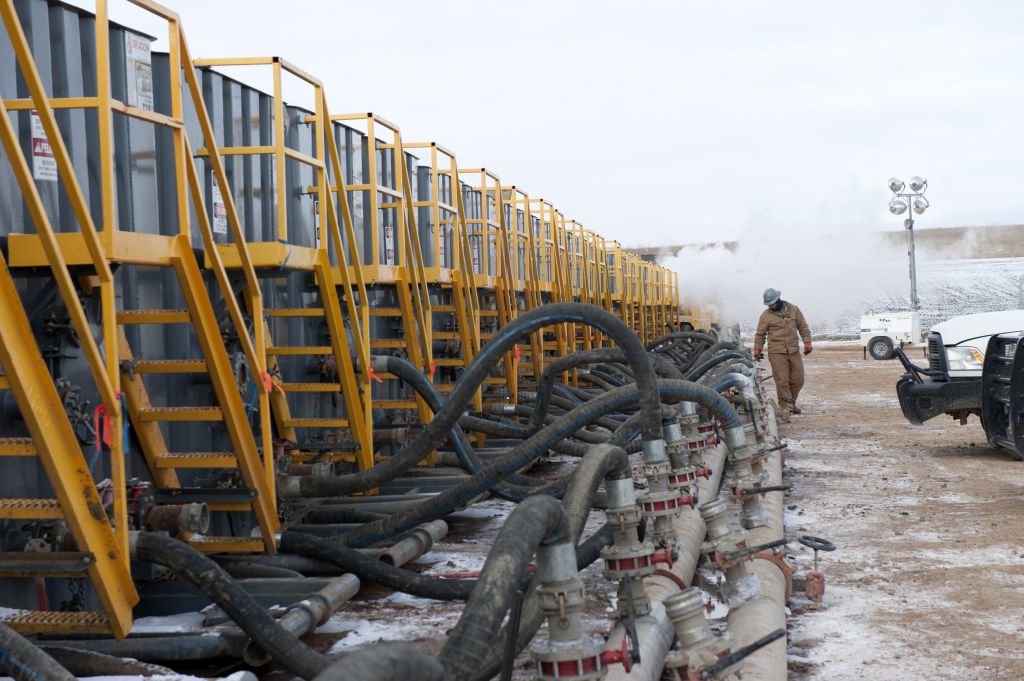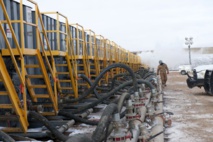Thestrategist.media, Houston – 13 May 2014 – As per Business Wire, new analysis from IHS sheds focus on almost 41 billion barrels of undiscovered potentially massive hydrocarbon resources that have yet to be discovered from areas lying outside North America. The ideas in work is that if conventional techniques of U.S Shale production are applied to these otherwise low-productivity plays, then those oil fields can benefit from vertical drilling and hydraulic fracturing to unlock a wide potential of availability of untapped oil reserves.
Representatives of the upstream energy research at IHS have spoken up about how surprising the reveal of the data found has been. Low productivity plays having revealed such potential resources was a pleasant find for the team of analysts and researchers. The energy sector especially the oil production zones have been hit by increasing production prices and expensive channels of processing, newly found potential oil resources can provide exciting opportunities to grow in terms of plays outside North America.
The major problem associated with these plays is that their rock properties are not very favorable towards conventional technique driven oil productions. The potential of theirs lies in the fact that unconventional techniques have now been developed that can produce desirable quantities of oil. These mature fields can yield up to 35 billion barrels that can be drilled out using hydraulic fracture stimulation whereas six billion barrels would be easier to drill out.
In case of zones where vertical drilling isn’t going to prove commercially viable there horizontal wells can allow access to thinner zones. The plus side of horizontal wells being they are structurally sounder in connecting different reservoirs and vertical wells together to create a strong distribution chain.
Modern seismic and MWD or measurement-while-drilling technologies would allow operators and engineers to place better fractures to take advantage for maximizing production of oil. Combining technologies developed for shale productions mixed with these modern techniques could very well revolutionize conventional oil productions.
Three examples of these low-yield zones discovered have to be the Tahe complex in China, the Bir Ben Tartar in Tunisia and the Saint Martin de Bossenay in France. These all fields posed some unique problems to engineers but the modern applications of technology proved these basins to be great resources for oil productions. For example, Bossenay was drilled using seismic technology as hydraulic fracturing isn’t allowed in France.
The number of low-productivity conventional fields are scattered all over the world. Currently four countries in terms of top potential outside North America have been reported to be Iran, China, Russia and Mexico.
While as many as 15 countries identified with such fields are out of access for most international oil companies, Mexico already holds significant incremental oil. Mexico is a pretty interesting investment option for foreign oil companies and several other countries like Congo, Brazil, Norway, U.K and Indonesia also provide attractive investment options.
About IHS
IHS (NYSE: IHS) is a market leader in terms of providing insightful and analytical information shaping business landscape of today. Businesses from over 165 countries rely on the detailed comprehensive content and expert provided analysis provided by IHS. IHS is a publicly traded company with presence in the New York Stock Exchange since the year 2005. It is headquartered in Englewood, Colorado. IHS is committed towards sustainable growth and promotes clean business strategies.
References:
http://www.businesswire.com/news/home/20150513006649/en#.VVsW67mqqko
Representatives of the upstream energy research at IHS have spoken up about how surprising the reveal of the data found has been. Low productivity plays having revealed such potential resources was a pleasant find for the team of analysts and researchers. The energy sector especially the oil production zones have been hit by increasing production prices and expensive channels of processing, newly found potential oil resources can provide exciting opportunities to grow in terms of plays outside North America.
The major problem associated with these plays is that their rock properties are not very favorable towards conventional technique driven oil productions. The potential of theirs lies in the fact that unconventional techniques have now been developed that can produce desirable quantities of oil. These mature fields can yield up to 35 billion barrels that can be drilled out using hydraulic fracture stimulation whereas six billion barrels would be easier to drill out.
In case of zones where vertical drilling isn’t going to prove commercially viable there horizontal wells can allow access to thinner zones. The plus side of horizontal wells being they are structurally sounder in connecting different reservoirs and vertical wells together to create a strong distribution chain.
Modern seismic and MWD or measurement-while-drilling technologies would allow operators and engineers to place better fractures to take advantage for maximizing production of oil. Combining technologies developed for shale productions mixed with these modern techniques could very well revolutionize conventional oil productions.
Three examples of these low-yield zones discovered have to be the Tahe complex in China, the Bir Ben Tartar in Tunisia and the Saint Martin de Bossenay in France. These all fields posed some unique problems to engineers but the modern applications of technology proved these basins to be great resources for oil productions. For example, Bossenay was drilled using seismic technology as hydraulic fracturing isn’t allowed in France.
The number of low-productivity conventional fields are scattered all over the world. Currently four countries in terms of top potential outside North America have been reported to be Iran, China, Russia and Mexico.
While as many as 15 countries identified with such fields are out of access for most international oil companies, Mexico already holds significant incremental oil. Mexico is a pretty interesting investment option for foreign oil companies and several other countries like Congo, Brazil, Norway, U.K and Indonesia also provide attractive investment options.
About IHS
IHS (NYSE: IHS) is a market leader in terms of providing insightful and analytical information shaping business landscape of today. Businesses from over 165 countries rely on the detailed comprehensive content and expert provided analysis provided by IHS. IHS is a publicly traded company with presence in the New York Stock Exchange since the year 2005. It is headquartered in Englewood, Colorado. IHS is committed towards sustainable growth and promotes clean business strategies.
References:
http://www.businesswire.com/news/home/20150513006649/en#.VVsW67mqqko



















